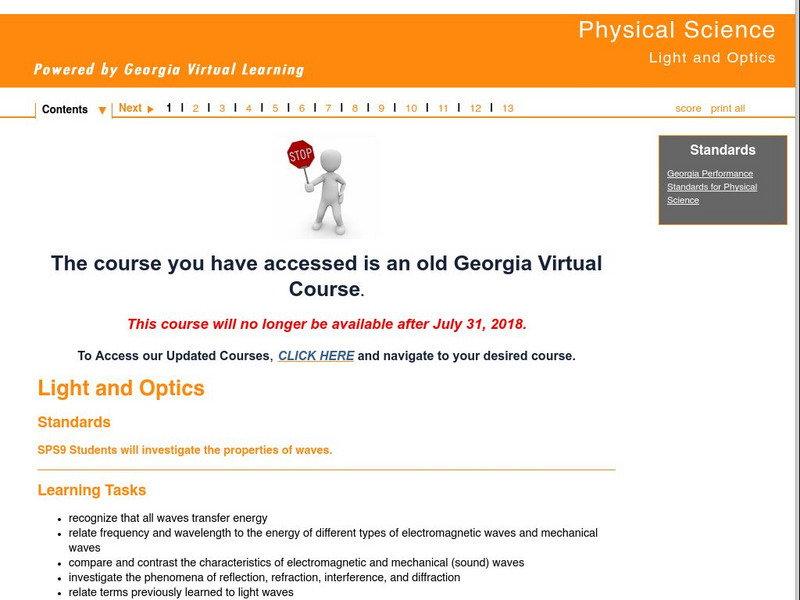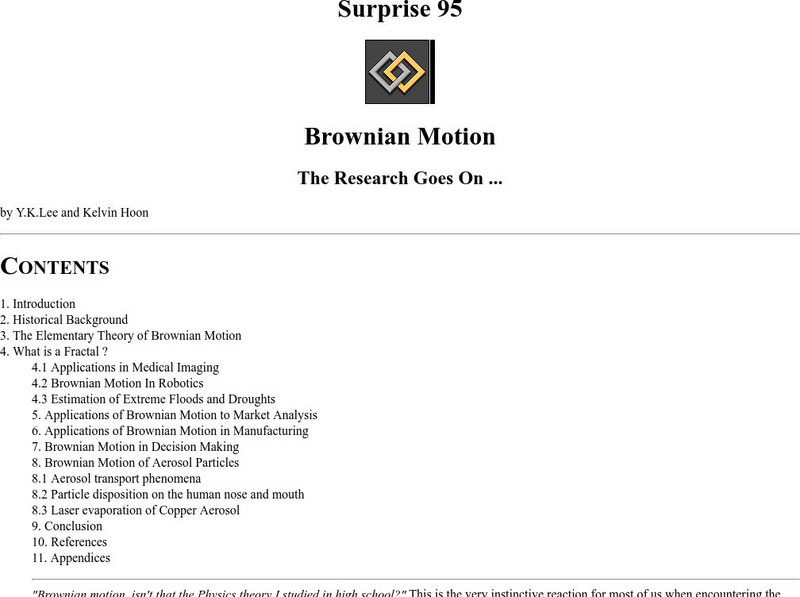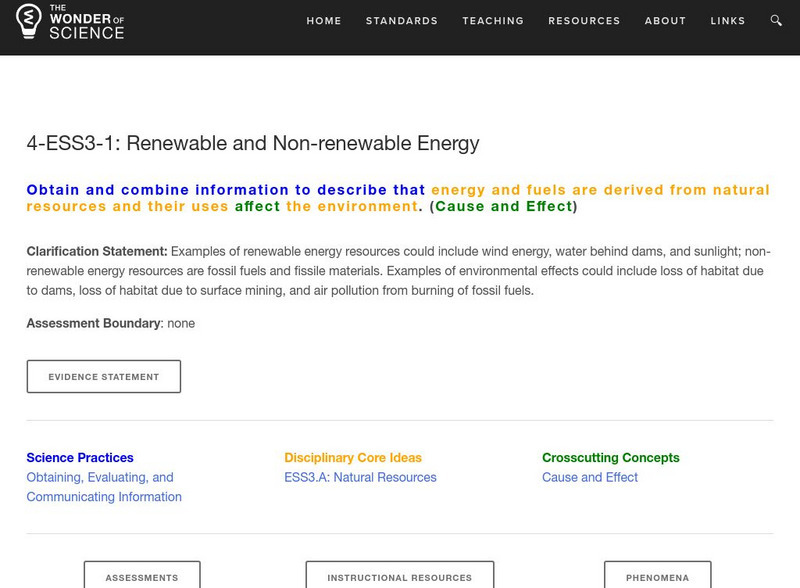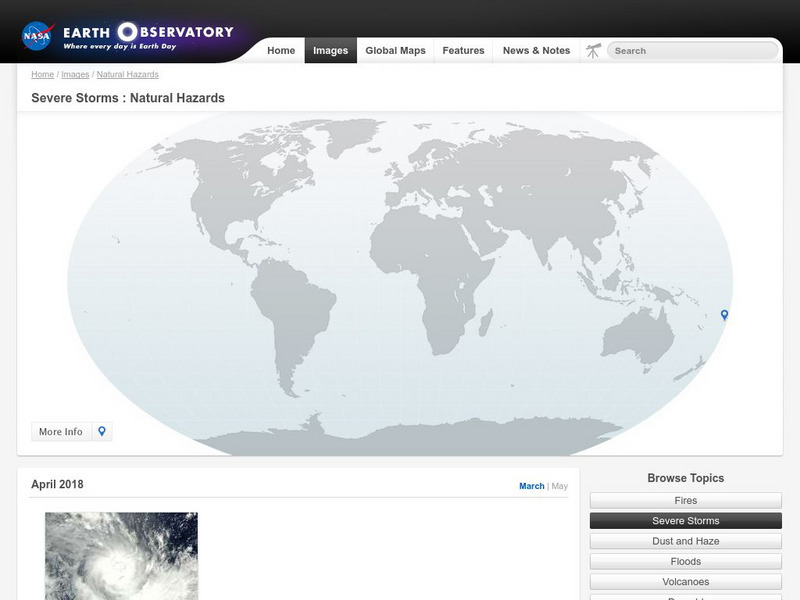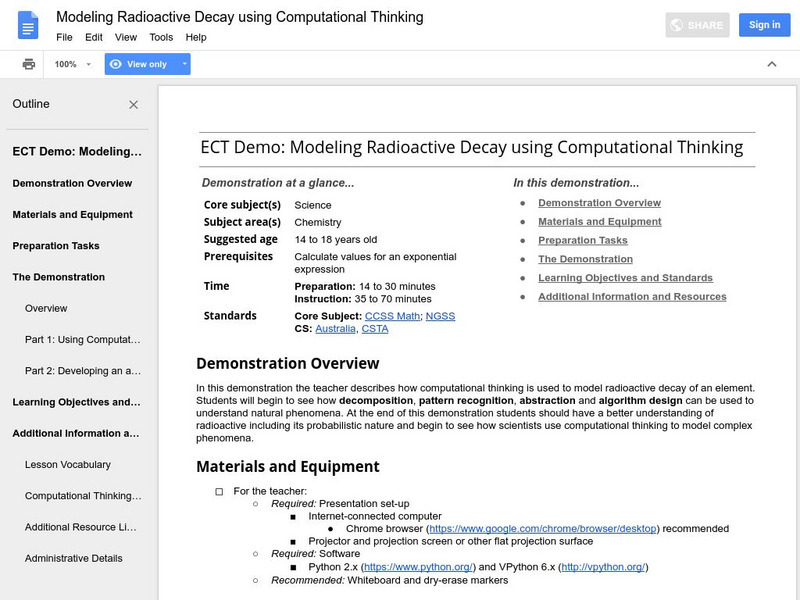PBS
Pbs: Earth Science Exploration
An earth science collection where students can explore earthquakes, volcanoes, and more natural phenomena. The collection uses videos and interactive activities to investigate our dynamic planet and earth systems.
Georgia Department of Education
Ga Virtual Learning: Physical Science: Light and Optics
Students will investigate the properties of light waves. They will learn about the different types of electromagnetic waves and mechanical waves, and investigate the phenomena of reflection, refraction, interference, and diffraction.
Other
Imperial College London: Brownian Motion
An advanced level description of the nature of Brownian motion. Brownian motion, a model formulated to predict matters involving uncertain elements, is related to medical imaging, fractals, robotics, aerosol particles, and stock market...
The Wonder of Science
The Wonder of Science: 4 Ess3 1: Renewable and Non Renewable Energy
Work samples, phenomena, assessment templates, and videos that directly address standard 4-ESS3-1: renewable and non-renewable energy.
NASA
Nasa: Space Place: Venus Crosses the Sun
Animations, videos, and informational text illustrating the natural phenomena of different types of eclipses.
TED Talks
Ted: Ted Ed: Why Wildfires Are Necessary
Our early ancestors relied on lightning to cause forest fires, from which they could collect coals and burning sticks to help them cook food and clear land. Yet, it wasn't just humans who benefited from these natural phenomena. Even as...
Encyclopedia Mythica
Encyclopedia Mythica: Mythology
Enhance your study of world mythology with these articles from Encyclopedia Mythica. Learn about mythic locations, creature, deities, and phenomena from Africa, the Americas, Asia, Europe, and Oceania.
The Wonder of Science
The Wonder of Science: Ms Ess3 1: Uneven Distribution of Earth's Resources
Work samples, phenomena, assessment templates, and videos that directly address standard MS-ESS3-1: uneven distribution of Earth's resources.
Alabama Learning Exchange
Alex: Edible Plate Tectonics
As we stand on the top layer of our planet it is a little difficult to get hands-on with plate tectonics. This activity uses layered cake to allow students an up close representation of how major land features have been created.
Other
Confederation of Oregon School Administrators: Waves and Their Applications
Every second billions of waves-sound waves, radio waves, light waves-pass through or bounce off our bodies. Over time people have developed technologies that make use of these natural phenomena to accomplish their goals such as creating...
TeachEngineering
Teach Engineering: Surface Tension
Surface tension accounts for many of the interesting properties we associate with water. By learning about surface tension and adhesive forces, students learn why liquid jets of water break into droplets rather than staying in a...
Georgia Department of Education
Ga Virtual Learning: Ap Physics 1: Work, Energy, and Power
The mathematical model for the relationships between work and energy serves to model physical problems and, more importantly, predict natural and man-made phenomena. Students discover the relationships which serve as a powerful...
NASA
Nasa Earth Observatory: Natural Hazards: Severe Storms
Browse pictures of severe storms, such as blizzards, cyclones, ice storms, and typhoons, while exploring the causes and often dangerous effects of these natural weather phenomena.
Exploratorium
Exploratorium: Cross Reference: Harmonic Motion
A page which cross-references various museum exhibits pertaining to harmonic motion. Page also contains an animation depicting the sinusoidal nature of simple harmonic motion.
TED Talks
Ted: Ted Ed: Pruney Fingers: A Gripping Story
Why do fingers become pruney when they get wet? Mark Changizi examines the evolutionary reasons for pruney fingers, while exploring natural and manmade phenomena, like river networks, that operate similarly. [4:22]
Google
Google for Education: Model Radioactive Decay Using Computational Thinking
Through this demonstration students will understand radioactive including its probabilistic nature and begin to see how scientists use computational thinking to model complex phenomena.
Curated OER
Bubbles
"What is so fascinating about bubbles? The precise spherical shape, the incredibly fragile nature of the microscopically thin soap film, the beautiful colors that swirl and shimmer, or most likely, a combination of all these phenomena?...

